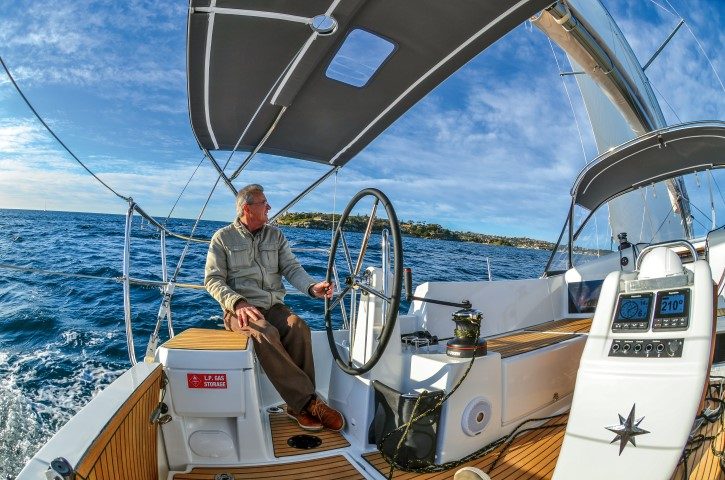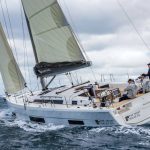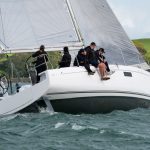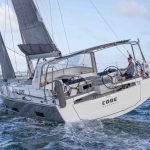‘Behemoth’ is a word which springs to mind or, perhaps more nautically, ‘leviathan’.
- Additional space created by full-length chine.
- Cockpit backrests that morph into sun beds.
- Three reefing points on the main.
- Nippy and agile. A pleasure to sail.
- Finger-light steering.
- Sail controls are logical and tidy.


















